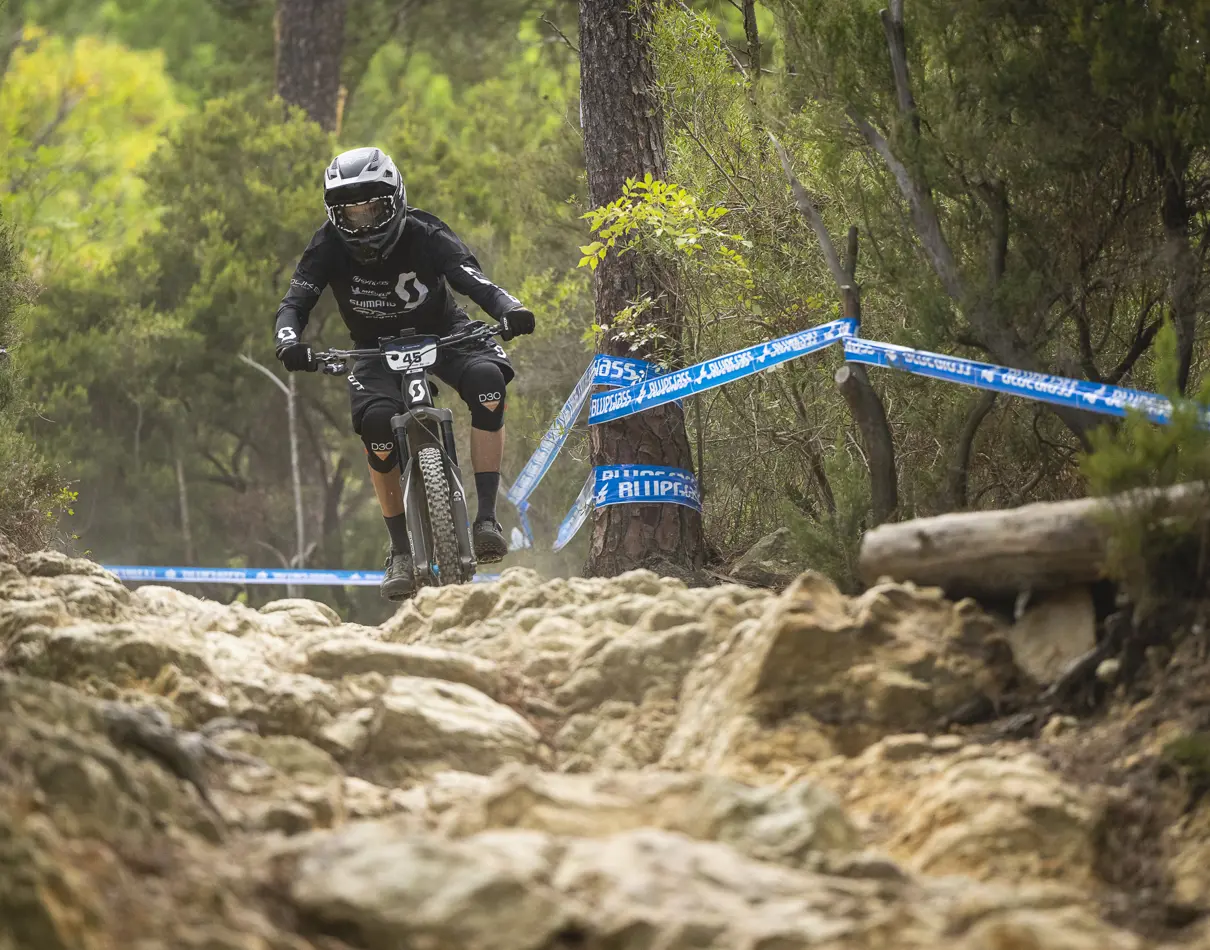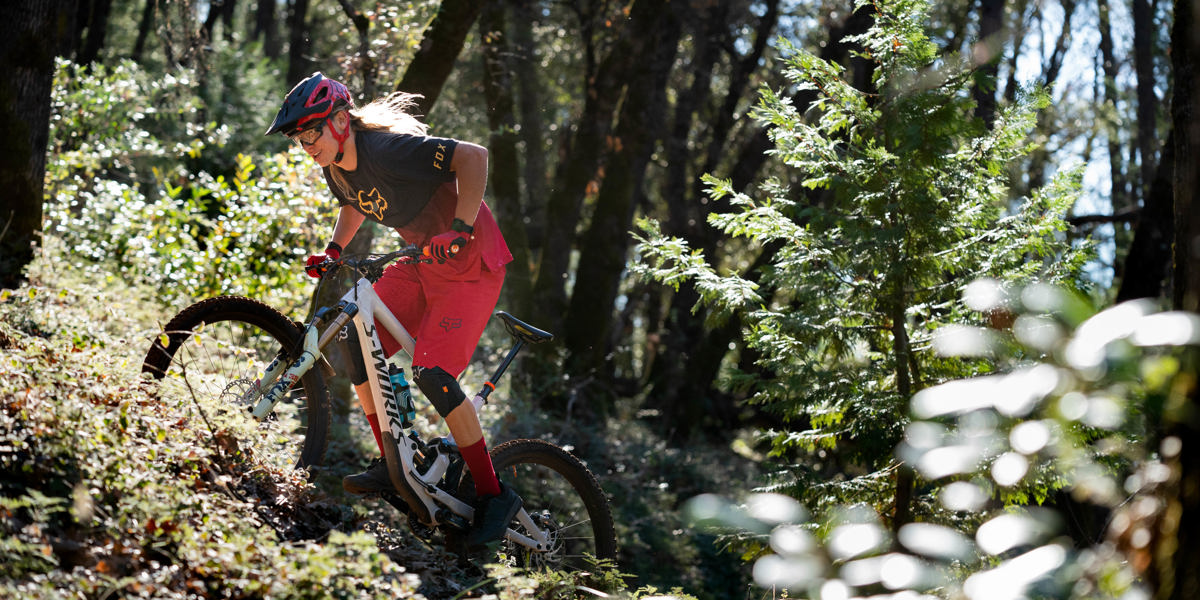What Is Enduro Mountain Biking

Mountain biking is multifaceted, as it encompasses a range of disciplines.
Whether a mountain biker prefers riding along at a leisurely pace, at speed, navigating rock gardens or jumps, there is a trail for all riders.
One of the disciplines within mountain biking is enduro. But, what does it mean? What makes it different? We’ve highlighted all the important things you need to know about enduro mountain biking in this article.
Enduro mountain biking explained
Enduro mountain biking originated in Europe, influenced by car rally racing and motorcycle enduro racing. The concept is to get to the top of a mountain and race to the bottom in a time-trial style. Typically, enduro races tend to feature three or more timed stages and they are held over one or two days. The races are mostly downhill but can vary in steepness, length, and difficulty depending on the trail. Between each section, there are ‘transfer stages’ which are usually uphill. These transfer stages can feature portions of hike-a-bike, a chair lift and/or pedaling.
Enduro mountain biking is pretty versatile in that it incorporates elements from the various mountain biking disciplines. For example, the endurance required in cross-country riding, and the bike-handling skills to maneuver the singletrack.
Is enduro just for the pros?
Despite enduro requiring some level of physical fitness and skill, amateur riders can and should participate in the discipline. Here are a few reasons why everyone can enjoy enduro regardless of their experience:
- When you’re out racing, it’s just you against the clock, as each rider is sent off down the track at 30-second to 1-minute intervals.
- Anyone with the right fitness level can ride a trail. Whether you’re a professional or amateur rider, everyone rides the same course.
- You can carry a backpack with you unlike some of the other disciplines. So it’s a good idea to bring a backpack with all the essential emergency tools.
- Enduro is known for having a friendly atmosphere. You can wait for your friends to finish at the end of each stage and travel up to the top together.
What's an enduro bike?
Enduro bikes are long-travel bikes specifically designed for speed on descents and for pedaling uphill between stages. They have more suspension than trail bikes as well as slack geometry, which allows riders to go faster. Some enduro bikes have smaller 27-inch wheels to help riders maneuver better and tackle technical terrains, offering more suspension than other bikes.

What protection to wear when enduro mountain biking
Your protective gear will be dependent on the conditions you will be riding, but you should wear:
- A helmet. Always wear a helmet even when climbing. Depending on your personal preference, you can wear a half-shell or full-face helmet.
- Mountain bike knee guards. Knee guards are a must, as they provide vital protection to the most commonly affected area in a fall or crash.
- Mountain bike back protection. A back guard is essential when riding. In the event of a fall, it will help to shield your spine. A baselayer with an integrated back protector is ideal in enduro. Some backpacks also come with back protectors built in for extra convenience.
- Mountain bike gloves. Wearing gloves will help you maintain a firm grip on the handlebars, while providing extra comfort and protection for your hands.
- Mountain bike elbow guards. The right ones protect your elbows while remaining comfortable and flexible, allowing you to maneuver with precision.
- Mountain bike shoulder protection. Integrated into a baselayer, this will guard your shoulders in the event of a crash, minimizing the risk of injury to this area.
- Clothing. Similar to the downhill mountain biking discipline, riders typically wear lighter clothing for optimum comfort while riding. It’s also a great idea to carry extra clothes depending on the weather conditions.
- Hydration pack. Basic tools in case you need to fix your bike while riding, food, and plenty of water to last you the day are essential.
- Eyewear. Wearing a pair of goggles or cycling glasses will help to protect your eyes from debris or mud while you’re riding down the trail.